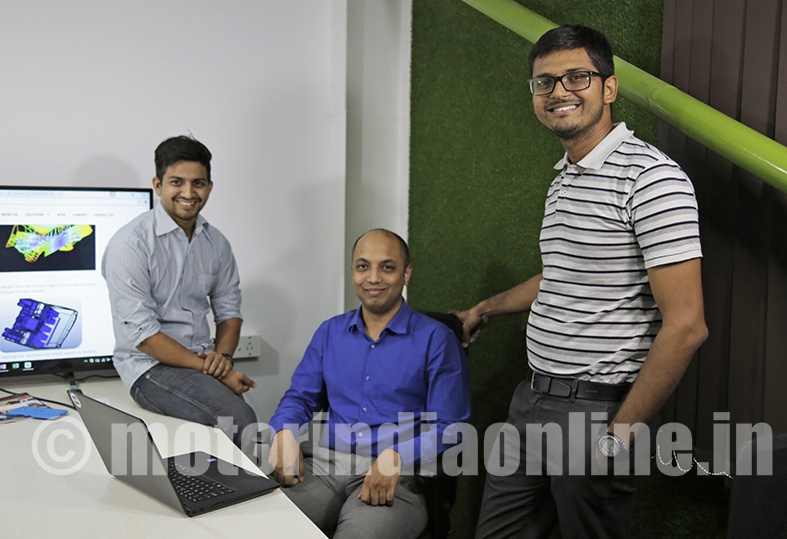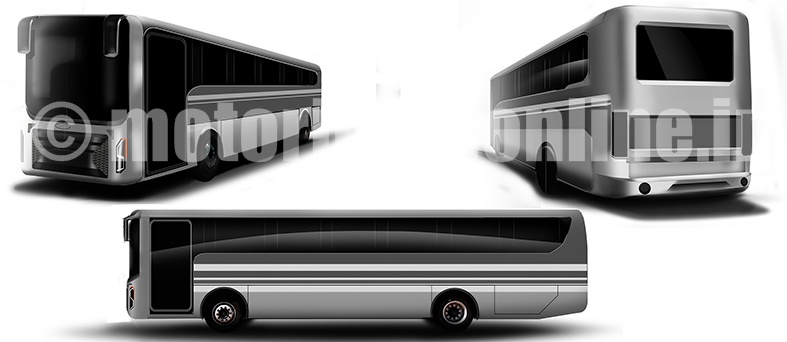They say a great idea is a surefire game-changer. Translate that into engineered designs, promise of non-escalation of cost and safe, durable vehicles. Advanced Structures India (ASI) hopes that these three ingredients will rid the Indian transport industry of the inertia and will help bring in change.
Mr. Vaibhav B. Kumar, Managing Director, Mr. Pratik Kumar Shukla, Principal Engineer, and Mr. Rahul Ramola, Chief Technology Officer, are first friends and then professionals and all are in the range of 28 to 30 years of age. They set up ASI three years ago to bridge a yawning gap created due to lack of better engineered vehicles which have safety and durability as in-built must-haves.

Tucked away in a huge warehouse cum tinkering yard, ASI under these three youngsters is quietly tunneling away at the resistance of the body building market – whether of a truck, bus or car with their ‘advanced’ designs. They believe that their designs are a requirement of today, not of future, which are about durable structures and purely Indian in nature.
Disruption at its best
ASI believes in three ideas that will prove disruptive to the market.
First, ASI thinks R&D is a daily activity. Mr. Vaibhav explains: “Most of the industry looks at R&D as a one-time activity. Based on the fact that the product has to be re-designed every year or half-yearly, round the year R&D is imperative.”
Second, they offer better engineered products at the same cost. Mr. Vaibhav shares: “The biggest myth is when somebody tells you that you don’t deserve safety because you buy a six rupee bus ticket for a three kilometer journey. The same amount of material existing on that bus, if put in a better manner can provide minimum level of safety, which is a given abroad.” ASI believes that all the stakeholders must work towards making the end-user’s life easier. And that is why, he says, “we target the relatively less organized sectors like e-rickshaw or bus body industry.”
Third, a major brand name does not automatically translate into a safe vehicle. He asks a pertinent question: “How much of that bus is made by the brand itself? OEMs have the hygiene and discipline to follow the norms and their own standards. But how many fully-built buses are actually being built? OEMs sell the chassis, somebody else builds the body. The market share of fully built buses is very small.” With norms being enforced by the relevant ministry, the bus body builders are finding it hard to cope up as they are not equipped.
What ASI promises is a quality product that exceeds the norms. He explains: “Norms are for bare minimum. There are agencies which help people meet them. But how about not only meeting but exceeding the norms, taking into consideration things that are not covered under the norms, and then making the product durable, so that the cost of ownership and operation goes down.”
Three key areas
The primary focus of ASI is vehicle benchmarking where they measure market perception of what works or doesn’t about a particular vehicle and model and offers engineering solutions. Then comes the aspect of product development. Mr. Vaibhav shares: “The industry is transitioning from licensed manufacturing to first generation of developing products as per requirement. Say a person is developing a family of fuel filters. He needs to know if the fuel filter will last a lakh of kilometers or not and if he can have a common design which can be used for different models for varied uses. ASI bridges the engineering gap for suppliers and OEMs who do not have the required capacity to upscale the performance and that too without any capital expenditure minus the lead time.”
He continues: “It helps the OEMs in focusing their R&D efforts and knowing what is the need of the hour. There are core activities in engineering which are focused towards safety, durability, emissions, but over and above that, we help them know the areas to modify or improve by which they can cut or escalate the price of a car. We can offer relevant inputs instantaneously using our database, which we update almost real time.”
The third key solution that ASI offers is design services. Mr. Rahul explains: “There was a buyer for bus body who wanted maximum storage without putting it on the roof. Neither will an OEM nor a bus body builder would respond to this requirement. Somebody has to offer this design modification without compromising the norms. We can.”
ASI feels that Indian norms cover safety but not durability. He says: “In India, a single chassis sees at least 2-3 bus bodies in its lifetime which is downtime. We have solutions for this and hence we started developing our own family of bus designs.”
ASI has developed a family of bus bodies for two manufacturers till date.
Though equipped with cost-cutting, superlative designs to increase efficiency, ASI finds it difficult to communicate to the industry. Mr. Vaibhav admits: “The challenge is the perception Indians have. For them, more is better and heavier is stronger. That’s wrong. For us, a single bus body should last the entire life of that chassis and must be lighter. All our designs are tested for 10 lakh km and we have complete data from tests done in various cities on different roads. The industry as such is very exciting but we don’t know how to communicate this to them.” Despite the road blocks, ASI intends to replace existing designs with their innovative ones in the next 3-5 years.
Creating an ‘Intention’ niche
ASI has created a niche for itself. Mr. Pratik explains: “In intention we are very different from other manufacturers because we serve markets which they wouldn’t. If a big design change is required by OEMs, it’s easy for us to incorporate because we work it in a modular fashion. We develop a superset of all sorts of chassis, regulations and all the existing and near future standard norms and all operations where these will be used. Then we derive a modular design and validate each module separately.”
According to Mr. Vaibhav, it is the fleet operators who are in the best position to demand for better engineered buses. As providers, ASI places utmost emphasis on offering new solutions that do not cost more than the old solution. He says: “We want to replace as many pre-regulation buses as we can,” if only the industry shakes off the debilitating inertia.
Vision ahead
Aiming to be the primary bus body design company in India, ASI sees itself developing complete products in the next five years. As Mr. Vaibhav puts: “Largely unchallenged in engineering terms”, ASI has quickly grown to a position where they can bill for value and not the cost. And icing on the cake is that the ‘competition is working in tandem with them’.
